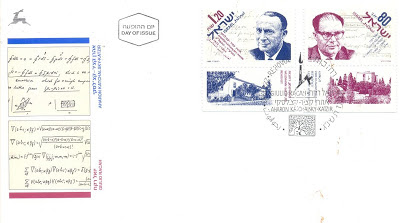Now we come to good ole nature, and its generous natural gifts to Cyprus, as amply illustrated on the stamps on this FDC postmarked on 10.10.1994, so thoughtfully given to me by Merja. A brief description of these Trees of Cyrus is given below.
Black Pine (Pinus nigra ssp. Pallasiana). Black Pine (Pinus nigra ssp. Pallasiana) is an evergreen coniferous tree, reaching up to 17-30 in height with a straight trunk. The foliage is thick and conical in shape, and in older trees becomes flattened. The leaves are needle-like and long and are usually in pairs (occasionally found in threes). Male trees produce flowers and the females have large oval cones, found singly or in clusters. Found on pyrigenic slopes at 1200mm above sea level and as high as the Chionistra peak (1952m). A tree of great ecological and aesthetic value. Apart from the Juniper (Juniper foetidissima) it is the only tree which can survive the low temperatures and heavy snow-fall of the Troodos Mountains. It is used in building, furniture making, the construction of cases, and as firewood. It is highly flammable as it contains resin.
Cyprus Cedar (Cedrus libani ssp. Brevifolia). Cyprus Cedar (Cedrus libani ssp. Brevifolia) is an endemic, evergreen, coniferous tree, 20-30 m high with straight trunk. On mature tees the branches spread out in clear horizontal layers. The leaves are small and needle-like on thick spines; there are male flowers and the female cones are large and oval and stand upright on the branches. Natural clusters of the Cedar are now found only in the Tripylos area in the Paphos forest at 1000-1400m above sea level. This area has been declared a natural reserve for flora and fauna in accordance with the forestry law. The cedar is a strictly protected species, of great ecological and aesthetic value. In the past its wood was used for ship-building and furniture making, and is highly flammable because it contains resin.
Golden Oak (Quercus alnifolia). Golden Oak (Quercus alnifolia) is an endemic evergreen shrub or small tree, growing to up to 10m in height with a multitude of branches and broad irregular foliage. The leaves are thick, hard and leathery, oval in shape, dentate and are golden or brown underneath and dark green on top. The flowers are male and the tree bears acorns. The Golden Oak is found in pyrogenic slopes at 700-1900m, and is the main species, together with the rough pine, of forest vegetation of our country. The Golden Oak is an attractive endemic tree of great ecological and aesthetic value and covers large expanses of our forest land either together with other bushy vegetation or as undergrowth beneath conifers. Its stump is able to regenerate itself should it be cut down or burned. It stabilizes sharp slopes and improves the soil. It is used as firewood and makes excellent coal.
Strawberry tree (arbutus andrachne). Strawberry tree (arbutus andrachne) is an evergreen small tree or large shrub, 3-10m high with broad, irregular foliage and typically smooth, chestnut brown bark. The leaves are thick and leathery, broad, oval in shape. The flowers are white and in clusters. Found at heights of 100-1550 m in forests and is of great ecological and aesthetic value. Its fruit is food for many bird species. It is used for firewood and coal. It is relatively resistant to fire and regenerates from its stump.



























